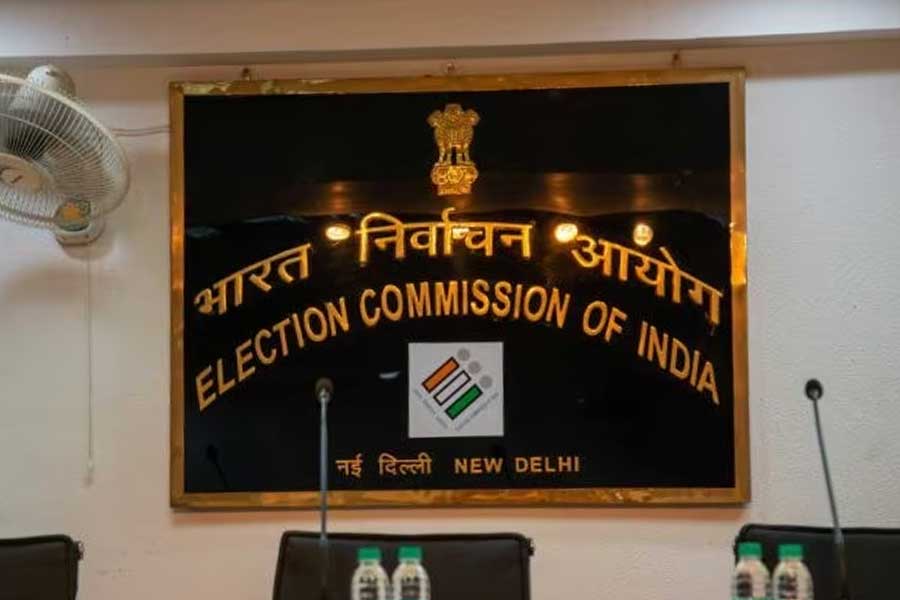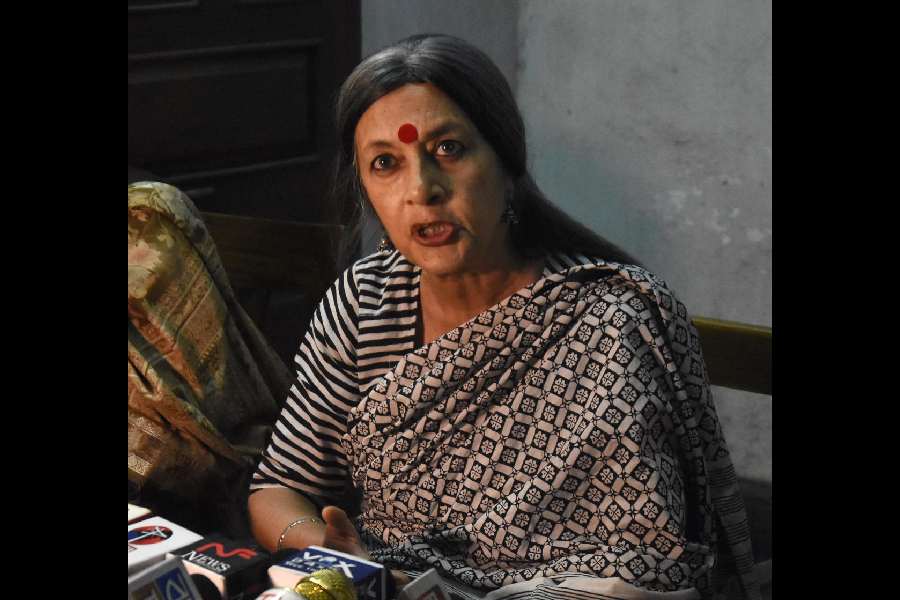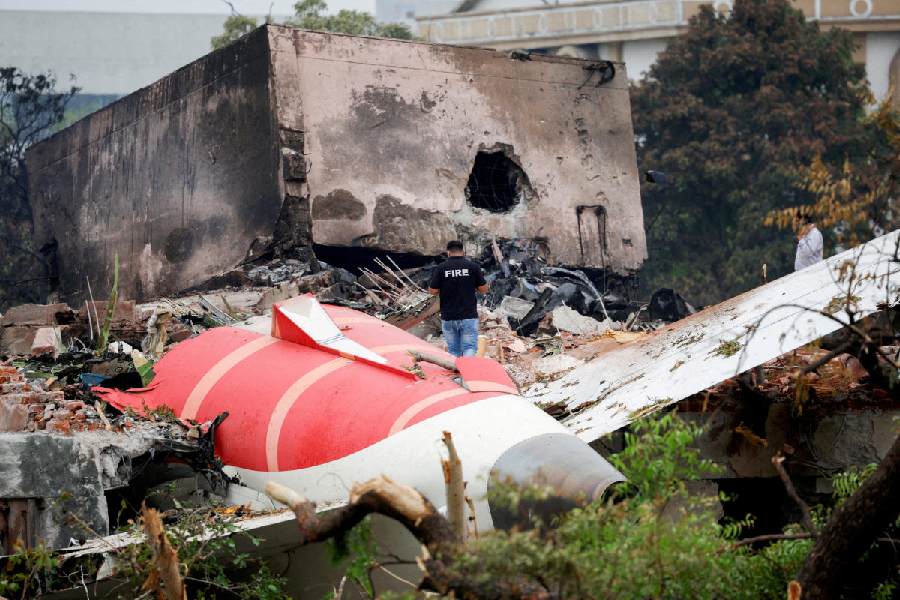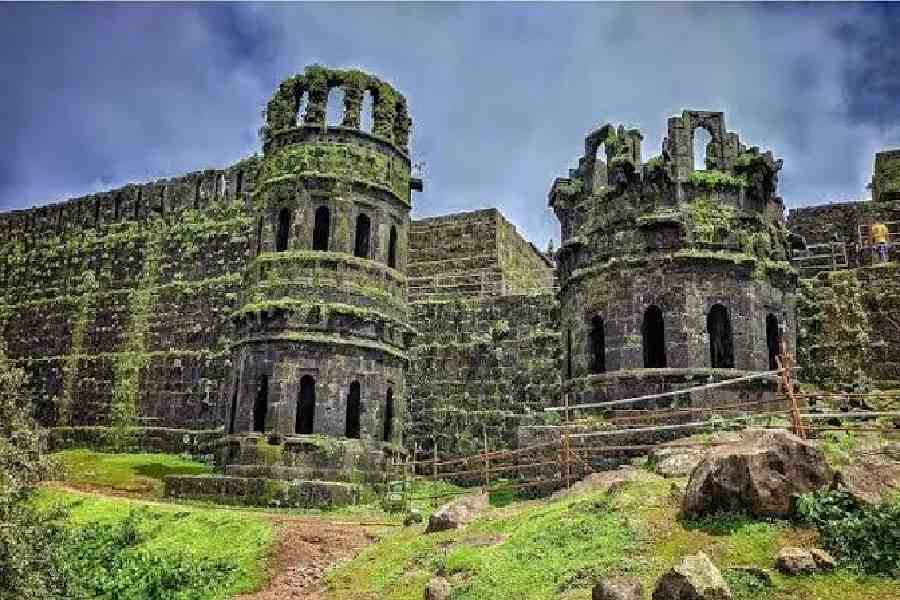 |
 |
| The black stone worshipped as Kali in Bagnan village and (below) Kali pukur, the pond where the stone was found according to legend. Pictures by Gopal Senapati |
On Saturday, the twin cities of Calcutta and Howrah were dotted with small and big images of Kali for her annual puja on the amavasya after Durga puja. But a small village in Bagnan, Saharah, had none of that, although not because the villagers are staunch non-believers. The village resonated with the sound of the dhak and conch shell on Saturday midnight. But instead of the fierce image of Kali, Saharah residents worshipped a black stone covered with a thick layer of vermilion.
Legend has it that anyone in the village who worships an image of Kali will incur her wrath. And so for over 300 years, the village has steered clear of the Goddess’s image.
Sukumar Sarkar, 75, one of the two sebayets of the Kali temple in which resides the black stone, said: “Kali appeared in a dream to the Maharaja of Burdwan, the erstwhile zamindar of Saharah. She told him that he must retrieve her from the south-west corner of Kali pukur (pond) and place her in a temple near the pond. After scouting the spot, villagers found a black stone with the image of Kali engraved on it. Since then everybody in our village has worshipped the stone.”
Another story on the origin of the stone worship does the rounds too. Some say one Chandrasekhar Mullick, a resident of Saharah, established a Kali temple and placed the stone there after it was retrieved from Kali pukur.
Despite the disputed origin of the temple, the villagers worship the stone as Kali and take great pride in their unique tradition.
Bidesh Das, a student of ancient history, said: “I am proud of our old legends. The puja is performed according to the scriptures in keeping with the tradition. We do not regret missing out on pandals and idols.”
Yogendranath Chakraborty, a resident of Saharah and author of Sankhipta Pallichitra, a book on the history of his neighbouring villages, told the chilling tale of a villager who dared to worship a Kali image. Kamal Lochan Chakraborty made an image of the Goddess and worshipped it. He was killed by a tiger, said Chakraborty.
According to him, the area around the Kali temple was covered in dense foliage and was home to a number of tigers. The village even has a pond called bagh pukur (tiger pond) that was once supposed to be a watering hole for the big cats.
According to legend, Goddess Kali kept night vigil in the village on a tiger. Some villagers claim to have seen the Devi near the temple sitting on her majestic mount.
The temple has its own legend. Set amid a dark forest, it was visited by dacoits at night, who worshipped the fierce goddess and sacrificed animals to appease her.
Today, the temple is looked after by two sebayets. The expenses are met from farming on a small plot donated by the Maharaja of Burdwan, said Sukumar Sarkar, a descendant of one of the sebayets appointed by the zamindar.
On Kali puja day, the temple and the adjacent aatchala are decorated with lights and dhak beats reverberate in the tranquil ambience of the village of the “stone goddess”.









